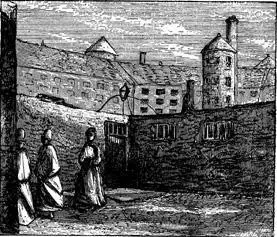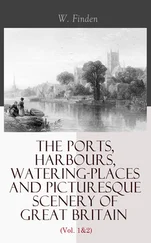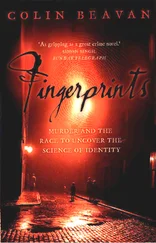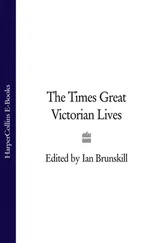She told me that when the nursemaid was accused she had fully made up her mind to confess if the nurse had been convicted, and that she had also made up her mind to commit suicide if she was herself convicted. She said that she had felt herself under the influence of the devil before she committed the murder, but that she did not believe, and had not believed, that the devil had more to do with her crime than he had with any wicked action. She had not said her prayers for a year before the murder, and not afterwards till she came to reside at Brighton. She said that the circumstance which revived religious feelings in her mind was thinking about receiving sacrament when confirmed.
Bucknill finished his letter by observing that, though Constance was not in his opinion insane, even as a child she had 'a peculiar disposition' and 'great determination of character', which indicated that 'for good or evil, her future life would be remarkable'. If placed in solitary confinement, he warned, she could succumb to insanity.
Emotionally, the explanation that Constance gave Bucknill had the eerie detachment that this crime must have required. The methodology of the murder supplanted any feeling about it. At the moment of Saville's death, her focus switched from the failing body to the sputtering candle on the toilet seat: 'The light burnt out.'
Despite its air of cold precision, though, the account was strangely imprecise. Constance's story of the murder didn't add up - as the press was quick to point out. How did she fold back and smooth the bedclothes in the cot while she was holding in one arm a large, sleeping boy of nearly four? How did she, still holding the boy, bend to the ground to lift up the drawing-room window? How did she manage to then crawl under it, still without waking him, and light a candle in the water closet to which she carried him? Why did she take the facecloth to the privy, and why had no one noticed it in her room before? How was it that she had splashed only a couple of spots of blood onto her nightdress while stabbing repeatedly at the boy? How had those who searched the house after the murder missed the stains on her nightdress, and the loss of Samuel Kent's razor? And how had she managed to make those deep stabs with a razor, a feat the doctors had declared impossible? Yet some of the details, if only because they complicated the picture, were persuasive: for instance, Constance's panic when it seemed that the 'blood would never come' seemed too particular and grisly to be invented.
The Times observed, with dismay, that the crime 'seems not to diminish in perplexity and strangeness as it is unravelled step by step. It is evident that we have not yet obtained a complete account of all the circumstances.' Even now, after a confession of murder, it seemed that there were secrets still. 'We are but little enlightened,' saisaid the News of the World - Constance's explanation merely added 'a new pang of horror'.
Forty years later, Freud made a gloriously confident assertion about how helplessly human beings betrayed themselves, how surely their thoughts could be read. 'He that has eyes to see and ears to hear may convince himself that no mortal can keep a secret. If his lips are silent, he chatters with his finger-tips; betrayal oozes out of him at every pore.' Like a sensation novelist or a super-detective, Freud fancied that people's secrets would flood up to the surface, in blushes and blanches, or work their way out to the world in the fingers' twitches. Perhaps somewhere in Constance's confessions and evasions the suppressed story of the crime and its motive lay in hiding, waiting to tell itself.

CHAPTER EIGHTEEN
SURELY OUR REAL DETECTIVE LIVETH
1865-1885
In October 1865, Constance was transferred from Salisbury to Millbank, a thousand-cell holding prison on the Thames - 'a big, dark building with towers', wrote Henry James in The Princess Casamassima , 'lying there and sprawling over the whole neighbourhood, with brown, bare, windowless walls, ugly, truncated pinnacles, and a character unspeakably sad and stern . . . there were walls within walls and galleries on top of galleries; even the daylight lost its colour, and you couldn't imagine what o'clock it was'. The female prisoners occupied a wing known as the Third Pentagon. A visitor to the gaol would see them 'erect themselves, suddenly and spectrally, with dowdy united bonnets, in uncanny corners and recesses of the draughty labyrinth'. The Penny Illustrated Paper sent a reporter to see in what conditions Constance was confined. He found Millbank 'a geometrical puzzle', 'an eccentric maze' with three miles of airless, seemingly subterranean 'twisting passages', 'dark nooks or 'doublings' in the zigzag corridors', 'double-locked doors, opening at all sorts of queer angles, and leading sometimes into blind entries, and frequently to the stone staircases which . . . seem as though they had been cut out of the solid brickwork'.
Constance was assigned a cell equipped with a gaslight, a washing tub, a slop pan, a shelf, tin mugs, a salt cellar, a plate, a wooden spoon, a Bible, a slate, a pencil, a hammock, bedding, a comb, a towel, a broom and a grated peephole. Like the other inmates, she wore a brown serge dress. Her breakfast was a pint of cocoa and molasses; lunch was beef, potatoes and bread; supper bread and a pint of gruel. For the first few months of her sentence she was forbidden from speaking to other inmates and from receiving visitors - the Reverend Wagner and Miss Gream applied for special permission to see her, but were turned down. Each day she cleaned her cell and went to chapel. Usually she was then set to work, perhaps making clothes, stockings or brushes for fellow prisoners. She had a bath a week, and a library book if she chose. For exercise she walked in single file, six feet behind the preceding convict, around the enclosed marshy waste ground that ringed the prison buildings. She could see Westminster Abbey to the north, smell the river to the east. Jack Whicher's home was a block away, invisible behind Millbank's high walls.
Whicher, meanwhile, took up his life again. In 1866 he married his landlady, Charlotte Piper, a widow three years his senior. If he had ever been legally married to Elizabeth Green, the mother of his lost son, she must have been dead now. The service took place on 21 August at St Margaret's, an exquisite sixteenth-century church in the grounds of Westminister Abbey, where sheep grazed on the green.
Elizabeth Gough had also married that year. At the church of St Mary Newington, Southwark, on 24 April 1866, almost a year to the day after Constance Kent's confession, she became the wife of John Cockburn, a wine merchant.
By the beginning of the next year Whicher was working as a private investigator. He didn't need the money - his pension was adequate, and the new Mrs Whicher had a private income. But now that he had been vindicated, his brain was cleared of congestion and his appetite for detection had returned.
Private inquiry agents, such as Charley Field and Ignatius Pollaky, were thought to embody the most sinister aspects of detection. Sir Cresswell Cresswell, the judge who presided over the divorce court, fulminated in 1858 against 'such a person as Field': 'of all the people in the world the people of England have the greatest objection to anything like a spy system. To have men running after them wherever they go and making notes of all their actions is what they hold in utter abhorrence. Everything of the kind is held in the greatest detestation in this country.' In Wilkie Collins' Armadale , published in 1866, the private detective is a 'vile creature whom the viler need of Society has fashioned for its own use. There he sat - the Confidential Spy of modern times, whose business is steadily enlarging, whose Private Inquiry Offices are steadily on the increase. There he sat - the necessary Detective . . . a man professionally ready on the merest suspicion (if the merest suspicion paid him) to get under our beds, and to look through gimlet-holes in our doors; a man who . . . would have deservedly forfeited his situation, if, under any circumstances whatever, he had been personally accessible to a sense of pity or a sense of shame.' The work was well-paid, if uncertain: in 1854 Field received fifteen shillings a day, plus expenses, to spy on a Mrs Evans, and an extra six shillings a day if he obtained the evidence of adultery that her husband required in order to divorce her.
Читать дальше













